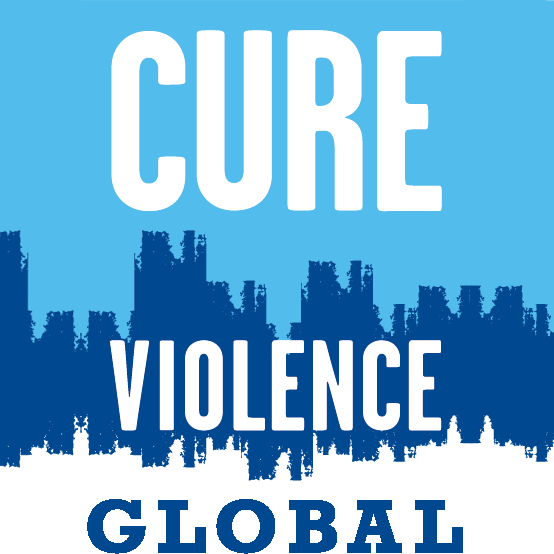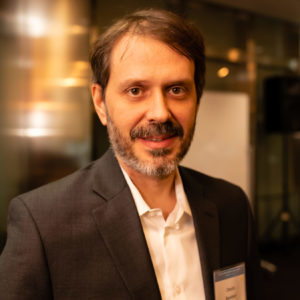
Cure Violence Global is an organization that uses scientific methodologies, drawn from public health, to reduce the incidence of violence in cities. They view violence analogous to an epidemic and implement well-established health methods to combat the ‘disease.’ ESAL spoke with Charlie Ransford, senior director of science and policy, to find out more about their approach and how it works.
RD: What does Cure Violence do?

Charlie Ransford
Ransford: Cure Violence is an organization that provides guidance and training to help communities implement an epidemic control approach to violence prevention, based on the view that violence is a contagious process. There are three components: initially you interrupt the ongoing transmission, then you change the behaviors of those who are most at risk, and finally you address any norms that encourage future transmission of the problem. Our aim is to implement this community-based approach to help as many localities as possible. We guide, train, and provide different types of technical assistance from hiring to funding, to support people in these communities so they can implement change. Our work spans numerous locations that are suffering from violence, with a strong concentration in the U.S. and Latin America, and we also have a history of programs in the Middle East, Africa, and Europe.
RD: Why is it helpful to view violence as a disease?
Ransford: Well, that's the science! The founder and CEO of Cure Violence, Gary Slutkin, is an epidemiologist who formerly worked with the World Health Organization to address numerous epidemics globally. Upon looking at the violence data in Chicago, he saw correlations of the violence that looked like an epidemic problem. Following the development and subsequent implementation of the Cure Violence method, we saw shooting rates drop by 67 percent in some neighborhoods within the first year – indicating that the methods work. Since then, in the last 20 years, we now understand the effects of violence and exposure to violence with science.
RD: Why does this method work?
Ransford: Following exposure to violence, this approach really helps to restore an individual’s sense of their humanity. The one-on-one relationship with the service provider from their community ensures individualized help from somebody they trust – somebody like them. When you compare the criminal justice approach versus the health approach, the latter focuses on providing solutions for that individual and for that community. However, the criminal justice approach is about punishment, alongside the additional harm involved in the intervention -- e.g. being stopped by a police officer. Adopting a health approach for both the individual and community is geared towards healing, prevention, support, and empowering people.
RD: What are you using from the science of public health to reduce the incidence of violence in cities?
Ransford: For each of the three components there are different methodologies. For interruption, we aim to change a person's perspective on the situation and bring in a third party who can help to influence the situation. It begins with a risk reduction plan which we create based on locality, the services available, and an individual’s needs. With norm change, it depends on the community. In some cases, we bring together the people who are directly involved, or those who are one step removed, and help talk them through the ways in which they might alter their speech and action to discourage violence. It is about educating people on how they can reduce their risk, how to resolve conflicts in group settings, and to support changes on an individual level. Then there are public educational materials for the community to help get the message out there.
RD: How do you think this relates to the current situation of police brutality - and finding other ways to reduce crime?
Ransford: Having a person who is trusted in the community and whose job it is to de-escalate situations, who's trained in that, can help in a number of circumstances whether they involve the police or not. In one community, New York City, we found that after our employee program was implemented, people had better attitudes towards the police and were more willing to work with them. There are studies that show that this approach helps with police-community relations. This is something that's based on science -- we can show that we have this effect. This movement is about finding ways in which we can intervene. There are laws, and you must have enforcement of those laws, but I think we are all relying on the police to do too many things. With our method, we can reduce the role of police and deal with problems in a much better way.
RD: How is the work received?
Ransford: Our approach offers a new way of thinking about things -- it's a new paradigm. It really requires that people understand the violence itself. The movement after the killing of George Floyd highlights the need to redefine how we address such problems. People are now trying to understand that even if an individual has a problem, it can be dealt with in a way that is helpful to them, and costs less to society.
RD: How can engineers and scientists use their skills to get involved?
Ransford: There is still a lot of research to be done on understanding violence, the effects of trauma, specifically how it affects the brain, and subsequent thoughts and behavior. Further research on violence as a contagion, quantifying it and establishing it, would really support our work. If we collectively understood violence as a health issue and addressed it as a health issue, then we would be able to get people treatment ahead of time, as well as understand the harm of exposure. We need to get ahead of the problem of violence.
Are you involved with an organization or effort that you think might be of interest to the ESAL community? Or have heard about an organization or initiative that you’d like to learn more about? Let us know here, and we may feature it in a future post.